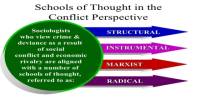Intercultural communication is the study of communication between cultures and social groupings, as well as how culture influences communication. It refers to the process of communicating between persons of various cultural origins. It highlights a wide range of communication processes and difficulties that naturally arise within an organization or social setting composed of people from various religious, social, ethnic, and educational backgrounds.
It entails the interchange of information, ideas, and sentiments between individuals or groups with disparate cultural norms, values, beliefs, and communication styles. In our increasingly diverse and interconnected world, effective intercultural communication is critical for bridging cultural barriers, reducing misunderstandings, and promoting mutual understanding and respect. In this way, it strives to comprehend how people from other countries and cultures behave, communicate, and perceive their surroundings.
Intercultural communication focuses on acknowledging and respecting cultural differences. Rather than total absorption, the goal is mutual adaptation between two or more separate cultures, leading to biculturalism/multiculturalism. It encourages the development of cultural sensitivity and allows for empathy across cultures.
Here are some key concepts and considerations in intercultural communication:
- Cultural Awareness: To effectively communicate across cultures, you must be aware of your own cultural background and biases. Understanding your own cultural influences might help you appreciate and understand the differences in others.
- Cultural Sensitivity: It is critical to be attentive to the cultural norms, practices, and values of others. Avoid making assumptions or stereotyping people from other cultures. Instead, approach interactions with a welcoming and courteous attitude.
- Nonverbal Communication: Body language, gestures, facial expressions, and eye contact can all differ dramatically among cultures. Understanding these distinctions is critical for correctly reading the intended message.
- Language: Language is a fundamental aspect of communication. Learning at least some basic phrases or expressions in the language of the culture you’re interacting with can go a long way in building rapport and demonstrating respect.
- High- and Low-Context Cultures: Different cultures have varying degrees of reliance on context in communication. High-context cultures rely more on nonverbal cues and shared background knowledge, while low-context cultures emphasize explicit verbal communication. Understanding this distinction can help in cross-cultural interactions.
- Communication Styles: Communication styles differ between civilizations. Some may be more clear and explicit, while others may communicate in a more oblique and nuanced manner. Recognizing these variations can help to avoid misunderstandings.
- Cultural Norms and Taboos: Every culture has its own set of expectations and taboos. In one culture, what is deemed courteous or acceptable may be offensive in another. Learn about these cultural differences to avoid inadvertently offending others.
Developing good international communication skills is a vital advantage in a globalized world where people from many cultural backgrounds meet on a regular basis. It promotes inclusivity, successful collaboration, and the development of personal and professional ties across cultural barriers.
















